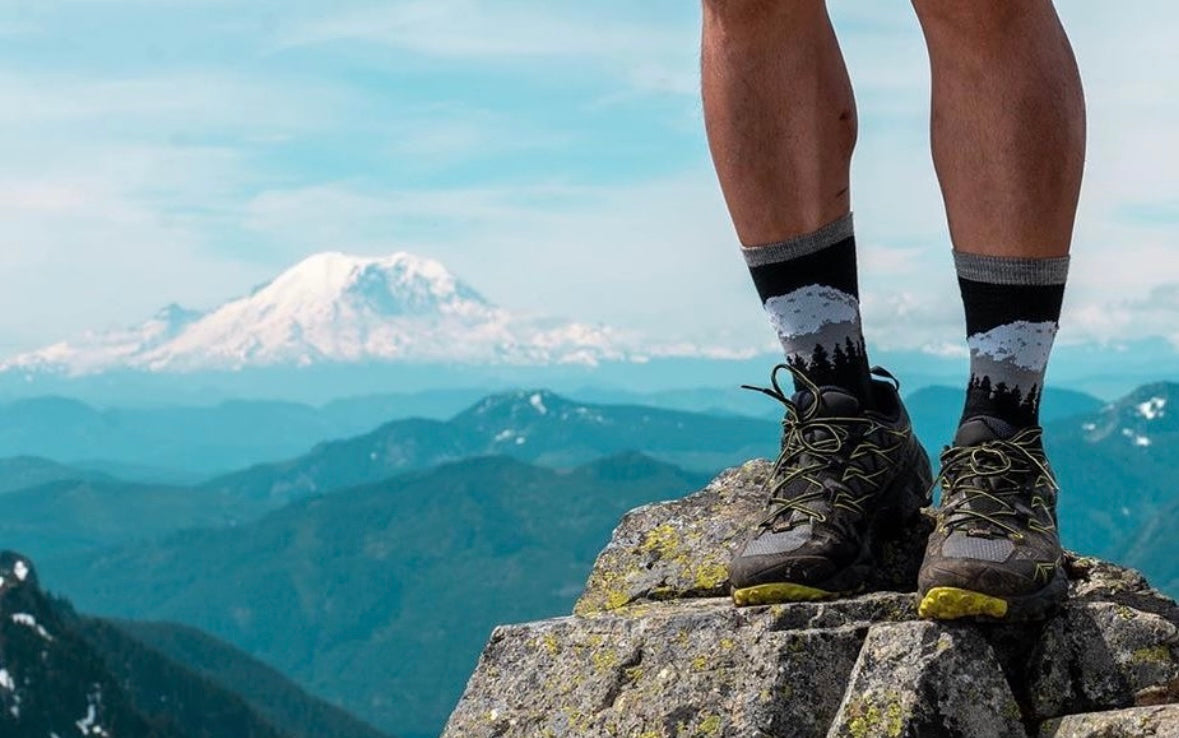The Cascade Range in Washington State is a hiker's paradise, with stunning alpine landscapes and challenging trails. However, these mountainous terrains come with their own set of safety considerations. Here are some tips for safely navigating the mountain trails in the Cascades.
Plan Ahead:
-
Trail Research: Research your chosen trail thoroughly. Understand its length, elevation gain, and difficulty. Pay attention to any recent trail reports or alerts.
-
Permits: Check if your hike requires permits. Popular destinations like the Enchantments and certain wilderness areas have limited entry and require permits that you'll need to secure in advance.
Weather Awareness:
-
Weather Forecast: Always check the weather forecast before your hike. The mountains can experience rapid weather changes, and it's crucial to be prepared for unexpected shifts.
-
Dress Appropriately: Layer clothing to accommodate temperature variations. Even in summer, high elevations can be quite cool. Bring extra clothing to stay warm, including a waterproof jacket in case of rain.
Safety Gear:
-
Navigation Tools: Carry navigation tools like a map, compass, or GPS device. Mountain terrain can be confusing, and it's essential to know your route.
-
Emergency Communication: In areas with limited cell phone reception, consider carrying a personal locator beacon (PLB) or satellite messenger device for emergency communication.
-
First Aid Kit: Pack a well-stocked first aid kit to address any injuries or emergencies that may occur on the trail.
Mountain-Specific Hazards:
-
Avalanche Risk: In winter and early spring, avalanche risk is a concern in the Cascades. Be aware of avalanche conditions and take precautions if hiking in areas with potential avalanche danger.
-
Snow and Ice: In colder seasons, trails may be covered in snow and ice. Crampons, microspikes, or snowshoes may be necessary for safe hiking.
Hiking with a Buddy:
-
Safety in Numbers: Hiking with a companion is safer in mountainous terrain. You can assist each other in case of an emergency.
-
Tell Someone Your Plans: Before you head out, inform someone you trust about your hiking plans, including your intended route and return time. This is a crucial safety measure.
Trail Etiquette:
-
Leave No Trace: Follow Leave No Trace principles to minimize your impact on the environment. This is particularly important in fragile alpine ecosystems.
-
Yield to Others: Follow trail etiquette and yield the trail to uphill hikers. This helps conserve energy for those who need it more on steep climbs.
Wildlife Awareness:
- Bear Safety: In certain areas of the Cascades, bears are present. Familiarize yourself with bear safety practices, including carrying bear spray and making noise on the trail to alert bears to your presence.
Physical Preparedness:
-
Know Your Limits: The mountain trails in the Cascades can be physically demanding. Assess your fitness level and choose hikes that match your abilities.
-
Hydration and Nutrition: Carry enough water and energy-rich snacks to stay fueled and hydrated during your hike. Higher altitudes can increase dehydration risk.
Hiking in the Cascade Mountains is a rewarding experience, offering breathtaking vistas and the thrill of conquering challenging trails. By following these safety guidelines and being well-prepared, you can enjoy the beauty of the Cascades while minimizing risks.
For more hiking tips, subscribe to our newsletter to stay up to date on all things hiking!

